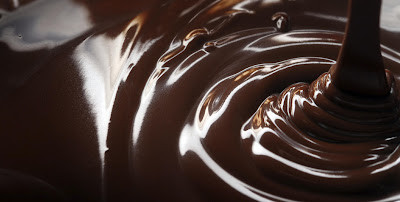 |
| Theobroma Cacao |
Chocolate is a food which stems from the cocoa beans. it is a common ingredient in many candies, ice cream, cookies, pies, cakes and desert.
The chocolate is obtained by fermentation, roasting and drying of the bitter beans that come from the cacao tree (Theobroma cacao) originally from Central America.
 |
| Mucilage |
As soon as harvested, the pods are broken with a club or a machete to extract the beans which are coated with a white pulp, called 'Mucilage'. This process is called 'pod breaking'. Each pod contains 20 to 50 seeds, and twenty pods provide 1Kg of dried beans.
 |
| Fermentation Process |
The beans are sorted, cleaned and subjected to fermentation
4 to 6 days in wooden boxes covered with banana leaves, in order to develop an early aroma as a result of natural chemical reactions. This first fermentation permits to liquefy the pulp surrounding the beans. During the second fermentation, the alcoholic pulp is transformed into vinegar. The beans are cleaned and the fermentation is stopped. these beans are aerated then dried.
 |
| Sun Drying Process |
After that, the agglomerated packets of beans are burst to later be sorted. To reduce the moisture rate from 60% to 8%, the beans are placed on racks in the sun or in artificial dryers. This process requires 1 to 2 weeks, and it shouldn't be too slow (moulds) or too fast (acidity).
After that process, the beans are mixed with hot air; this is called calibration;
The flat beans are faulty, so they are set aside for powder or cacao butter.
 |
| Roasting Process |
The plump beans are bagged and sent to the roasters. They are then roasted between 120ºC and 140ºC. The degree and roasting time will vary depending on the origin of the beans, the type of cacao or chocolate that is sought. Each type requires the cacao roaster to graduate the roasting time and degree of heat.
The beans are then passed to the 'crushing' to later be processed until getting the crane, the bitter cacao paste.
 |
| Aztec holding Theobroma bean |
 |
| Aztecs Preparing Chocolate |
The Aztecs pounded the cacao beans on there knees, using a mortar half wood half iron slightly heated on a flad stone. The beans were roasted and then crushed with spices, pepper, cinnamon, and achiote, then it is served.
Once crushed, the cacao beans are transformed into liquid paste called cacao mass, or pulp, or cacao liquor. It is from this dough that we can prepare cacao powder, cacao bar, or chocolate,.
After the cacao pulp is crushed it is pressed in hydraulic presses equipped with filter cloths and we obtain two products:
- A liquid, cacao butter, will be deodorized then poured into moulds where it will solidify; this represents about the half of its weight.
- A solid, the meal which be crushed to give cacao powder.
 |
| Conching Process |


No hay comentarios:
Publicar un comentario